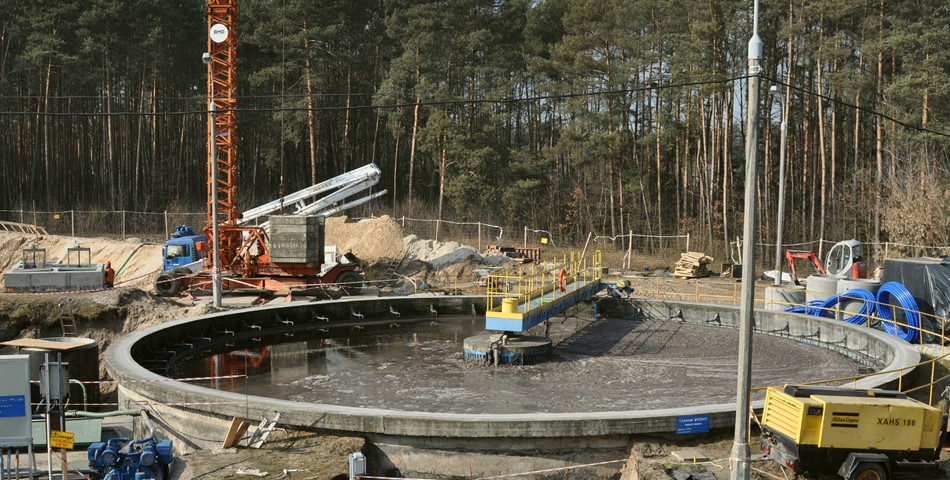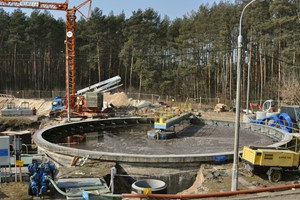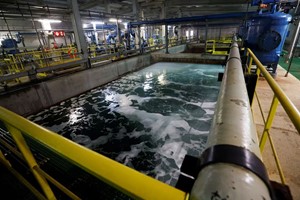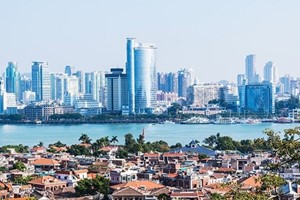It is estimated that China's sewage discharge has kept growing for many years and the discharge exceeded 75 billion tons in 2016. Domestic sewage discharge accounted for over 70 percent of the total sewage discharge and the growth rate of industrial sewage discharge has slowed down. China's urbanization accelerates with the development of economy. China's urban population reached 793 million by the end of 2016, accounting for 57.35 percent of the total population. Major source of municipal sewage is domestic sewage, which is characterized by large discharge but low treatment efficiency. Inadequate sewage treatment is likely to cause water pollution, causing barriers to municipal water environment construction and water supply. Major subsectors of sewage treatment industry include design and construction, equipment manufacture, operation and services. With fewer technical barriers and lower capital turnover, the design and construction business is conducive to market development. Recent years have witnessed many enterprises accessing construction sector of sewage treatment industry with ever-increasing concerns on environmental protection. In recent years, EPC projects have decreased, and generally sewage treatment plants adopt the BOT projects, which raise the gross profit of sewage treatment business compared to that of the EPC projects. Technology and fund together determine competitiveness in terms of relevant equipment. Well-funded companies will make high profits and get returns in technical businesses in a short period. However, small companies with poor fund need to concern the negative factors including the excessive initial investment, low output and a long period. According to this research, 70 percent of 1.3 billion Chinese population use groundwater and more than 400 of 660 Chinese cities rely on groundwater. According to relevant statistics, about 90 percent of China's municipal groundwater is polluted. Unprecedented attentions are paid to sewage treatment and recycle industry with the deteriorating situation of water pollution. There is large development potential in sewage treatment industry, for the gross profit rate was high in various regions in the two years. According to this research, the sewage treatment rate is high, generally over 90 percent in developed cities including Guangdong, Jiangsu, Shandong, Zhejiang and Shanghai. The sewage discharge is determined by sewage treatment capacity and growth rate and the sewage treatment markets there are mature. These sewage treatment plants have good prospect in upgrading & reconstruction, sludge disposal and reclaimed water. Sewage treatment efficiency is generally low in China's central and western regions, at a treatment rate less than 80 percent. There is a severe supply shortage in China's sewage treatment industry, especially in regions such as Yunnan and Inner Mongolia where growth rate of sewage discharge exceeds the treatment rate. On the whole, the key construction projects of China's sewage treatment industry will be gradually transferred from large cities and eastern regions to central and western regions and middle and small cities. The Chinese government has issued some policies to regulate strictly the sewage treatment industry in order to guide China's sewage treatment market. However, China's municipal sewage discharge keeps growing with the rapid urbanization and growing urban population. Daily municipal sewage discharge reached 140 million cubic meters while 150 million cubic meters in 2016. It is estimated that China's domestic sewage discharge will keep growing during 2017-2021 with the ever-increasing urban population. The Chinese government plans to raise the efficiency of collecting sewage by increasing sewage pipe network by 125,900 kilometers, which helps raise the capacity utilization ratio of sewage treatment plants. Besides, the Chinese government encourages non-state-owned investment in China's sewage treatment industry. It is estimated that, during 2017-2021, China's sewage treatment industry will keep developing under the influence of government policies and market demand.
Country Reports - China
China Sewage Treatment Industry:
Great Opportunities for Investors
December 2017

The distribution of China's water resources is uneven across areas and between the years. China is faced with water resource issues, and is under moderate water shortage in terms of water resources per capita though the total water resources are large. Sewage issues affect life and environment and also increased the municipal economic water scarcity. In recent years, the Chinese government has published a series of policies to promote the sewage treatment industry for China's water pollution issues is deteriorating.
Related Articles













